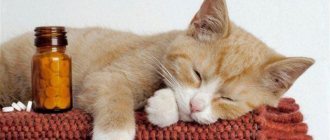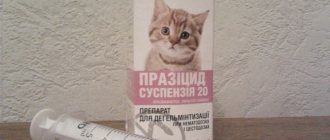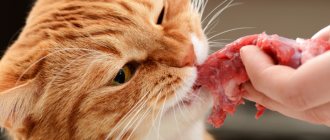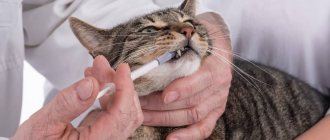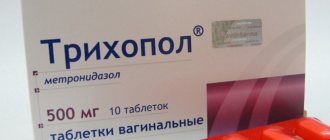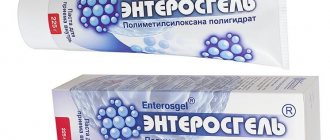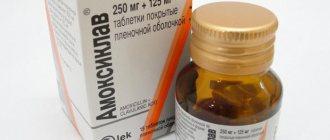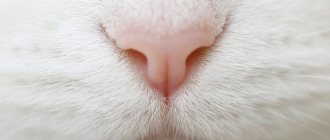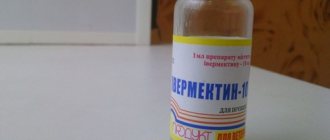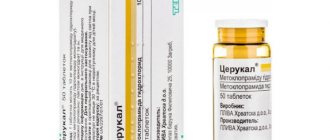Cyston for cats is a medicinal product consisting exclusively of natural ingredients. The medication has become widespread in the treatment of pets, due to the absence of severe toxic effects and the possibility of using the drug at a young age of the pet. Despite the natural composition of the drug, Cyston should only be prescribed by a veterinarian after assessing the severity of the cat or dog’s condition.
Cyston for cats
Description and characteristics of the drug "Cyston"
The drug "Cyston" is made from vegetative material, it is used in complex therapy for urolithiasis, as well as genitourinary tract infections. Components of plant origin included in the chemical composition of the described product hinder the formation of calculi (stones) in the bladder and improve the general condition of the animal with cystitis. These are round-shaped tablets with a biconvex structure. Their shade is coffee, with inclusions of dark brown color. The diameter of the tablet is 8 mm.
Cystone does not cause side effects when combined with other drugs.
general description
Initially, the medicine was developed by the Indian company Himalaya for humans, but is now successfully used for animals. Cystone does not contain toxic substances, so it can be given to cats. Although it should not be used without a doctor's prescription.
The medicine is produced in the form of light brown tablets. They may have inclusions of a darker or lighter shade and a heterogeneous structure. Round tablets are odorless. For their packaging, polymer jars are used, which are closed with lids. Each container is additionally packaged in a cardboard box and comes with instructions for use, but they are written for people.
The basis of the drug is a complex of herbs, but the composition also includes auxiliary components:
- colloidal silicon dioxide;
- magnesium stearate;
- microcrystalline cellulose, etc.
Chemical properties
1 tablet of herbal medicine contains:
- Didymocarpus stem leaf - 65 mg;
- saxifrage roots - 49 mg;
- madder root - 16 mg;
- rough strawflower in seeds - 16 mg;
- Onosma bract – 16 mg;
- Ash vernonia - 16 mg;
- silicon lime powder - 16 mg;
- mineral purified resin - 13 mg.
Did you know? Today, the smallest representative of the cat family is the black-footed cat, which reaches a length of 50 cm and weighs 1.2 kg.
Composition and release form
Cystone is produced only in tablet form. Packaged in jars of 100 pieces. Active substances are extracts of various herbs. All of them are known for their ability to destroy kidney stones and remove salt concentrations from the body. Some hoods are treated with steam. This processing allows you to take the maximum useful elements from each plant. All their natural strength goes to fight pathogenic bacteria.
One tablet contains at least 65 mg of flowers of the double-stemmed plant, known for its medicinal properties. It has been used since ancient times in Arab and Persian medicine.
49 mg of saxifrage reed stems, which has strong healing abilities, has anti-fever and anti-tumor properties.
The underground part of the satiety is membranous, which has diaphoretic and analgesic properties.
The stems of madder cordifolia have always been widely used in folk medicine.
The seeds of the strawflower are not only beneficial in themselves, but help activate the strengths of other plants.
Onosma bracts has a strong diuretic property.
Vernonia ashy is also quite popular among traditional healers. It is included in preparations for diabetics, anti-fever medications, and is used in the pharmaceutical industry to create medications for some symptoms of AIDS.
Fava bean and teak seeds are also widely known for their anti-inflammatory properties and diuretic properties.
The fruits of Tribulus terrestris are used to alleviate not only all types of nervous diseases, but also to treat urolithiasis.
Mimosa pudica seeds and fragrant pavonia were also included in the composition for the same properties.
In addition to herbs, the composition also contains 13 mg of purified and crushed mumiyo, an organo-mineral alternative medicine product of natural origin, and 16 mg of lime silicate.
Magnesium stearate, crospovidone, aerosil, sodium carboxymethylcellulose, microcrystalline cellulose are also present as auxiliary ingredients.
Pharmacological effects
The components that make up the product have antispasmodic, antimicrobial and litholytic effects on the body. The tablets in question can slow down the process of stone formation by reducing the saturation of substances such as oxalic acid, calcium and hydroxyproline in the urine.
Did you know? The cat is able to jump to a height 5 times greater than its own height.
By acting on mucoproteins containing acidic polysaccharides, the drug promotes the crushing of stones, leading to a decrease in the content of mineral salts, which facilitates the process of their expulsion.
Nephrolitholytic effect
The nephrolitholytic effect of the drug does not depend on the acidity of urine. “Cyston” stimulates diuresis by relaxing the smooth muscles of the urinary tract, thus promoting the removal of phosphates, urates and small stones from the urinary tract. The product has an antispasmodic effect, which relieves pain when urinating.
Plant components crush fractions, soften them and remove them along with urine, causing a minimum of discomfort.
Antimicrobial action
The medication also has a bactericidal effect on gram-negative bacteria that settle in the urinary ducts and bladder and cause inflammation. The antimicrobial effect of the drug is useful in the treatment of genitourinary infections.
Important! The appearance of blood in a cat's urine or difficulty urinating requires immediate examination at a veterinary clinic.
Methods for treating urolithiasis in cats
Treatment of urolithiasis in cats is a very painstaking procedure. You should definitely contact a veterinary clinic for advice if you notice a deterioration in your pet’s condition.
Urolithiasis is also called urolithiasis or, in short, UCD. This is when a cat's bladder fills with sand or stones form in his kidneys. Harmful substances are retained in the ureter or pass with severe pain. With this disease, blood is observed in the cat's urine.
Of course, accepting such a fact is painfully difficult, but necessary. Therefore, many people wonder how to treat urolithiasis in cats. But first you need to figure out who is at risk.
- Males are more susceptible to urolithiasis than cats. Since cats have a narrow lumen of the urinary canal, and the opposite is true for female pets;
- Neutered pets;
- Overweight cats;
- Age category from 2 to 6 years.
This means that 12% of cats are at risk of developing this disease. Disorders of the genitourinary system or poor metabolism lead to the formation of stones and sand, which are not easy for four-legged animals to tolerate.
In the first days, symptoms of urolithiasis in cats appear weakly and unnoticeably. Therefore, owners do not immediately notice the malaise of their pets. Consequently, treatment begins at the wrong time.
There are some changes to the daily existence of a cat:
- He begins to lick under his tail frequently;
- Urination occurs frequently and for a long time;
- While visiting the toilet, the cat begins to meow, allegedly complaining of discomfort.
There are also critical signs when a cat needs emergency treatment:
- He stops going to the toilet altogether;
- He doesn’t eat anything, but he is overtaken by vomiting;
- Convulsions occur;
- The cat loses consciousness.
They will carry out special procedures that will help identify urolithiasis or its absence. For example:
- Ultrasound of the bladder;
- Urine test;
- Plain or contrast X-ray;
- Instant Invasion;
- In isolated cases, palpation is performed.
Some owners engage in self-diagnosis to identify urolithiasis. Fill a plastic glass with cat urine and place it in a bright place to see whether a sediment forms or not. But this is an unreliable analysis. Since sediment is formed due to natural influence. Therefore, using the “grandmother’s method” makes no sense. Quality treatment is necessary.
When the owner notices the primary signs of the development of the disease, before going to the veterinarian, he can relieve the spasms and prevent a severe attack from happening. You will need to place a slightly heated heating pad in the abdomen and perineum of your pet.
We must not forget that cats do not tolerate urolithiasis well. And if you delay going to the clinic for treatment, the pet may die within three days.
There are some rules according to which treatment is carried out:
- The acute phase is stopped;
- The outflow of urination is restored. A catheter is used to remove stones or sand. In rare cases, surgery is performed;
- Droppers are prescribed to relieve intoxication spasms and eliminate dehydration;
- Anti-inflammatory treatment is carried out;
- Finally, anti-infective drugs or vitamins are prescribed.
We invite you to familiarize yourself with: Carrying bag for a cat - easy with your own hands
Plus, specialists can offer conservative or surgical treatment. But this will depend on the number and size of stones.
The surgical treatment for urolithiasis involves the cat being under general anesthesia. This makes it possible to remove stones with extreme precision. Therefore, send them for tests that can identify the true factor of occurrence. Then you can avoid reappearance.
Conservative treatment - pain relief and the desire to dissolve stones with the help of diet or medications. This method can be called gentle, but the likelihood of dissolving stones is low.
The type of treatment must be prescribed by a veterinarian. After diagnosis, he will determine the condition of the cat, the type and number of stones formed. Based on the indications of these factors, treatment will proceed.
At home, the owner must strictly follow the recommendations of the treating specialist in order to avoid deterioration and death. Most likely, antibiotics will be prescribed, a balanced diet and a second test will be prescribed.
When the cat's urolithiasis subsides, the doctor will institute diet therapy and medical examination.
It is worth remembering that medication treatment is prescribed by a veterinarian. They often use drugs such as:
- Capsules "Uro-Ursi". Prescribed for antibiotic treatment. Helps get rid of urolithiasis.
- Additive "Cistokur forte". Reduces acid in the body and the cat recovers faster after treatment.
- Stop cystitis tablets. Act as an antimicrobial, anti-inflammatory and analgesic.
- The drug "Urotropin". This is a diuretic that promotes rapid elimination of toxins.
- Liquid "Furinide". Creates an immune film on the bladder.
- Solution and tablets "Kantaren". Relieves spasms and kills inflammation.
- Ipakitine powder. It is prescribed without fail in the treatment of urolithiasis.
- Infusion "Kotervin". Removes salts and dissolves stones.
- Renal Advance powder. Prescribed for the treatment of the last stages of urolithiasis. Plus, it improves digestion.
- Tablets "Nefrocat". They contain only natural ingredients that prevent urolithiasis.
- Nitroxoline tablets. An antimicrobial agent that eliminates urolithiasis.
- Cyston Himalaya tablets
This drug was created in India, therefore it is considered an Ayurvedic remedy with many benefits. Kills inflammation, is prescribed as a diuretic in the treatment of kidneys and much more.
Prevention of urolithiasis is a unique goal that aims to prevent, support treatment and eliminate its occurrence. Every owner of a four-legged friend must know several preventive actions, namely:
- The cat should drink plenty of purified water;
- Maintain the required weight;
- Eat a balanced diet;
- The pet’s gastrointestinal tract needs proper work;
- The apartment or house must have an optimal temperature.
By adhering to these concepts, life will be filled with positive emotions, and your beloved pet will not need treatment.
A balanced diet should be based on meat products. You can add vegetables, boiled or fresh. But so that they contain little calcium and alkalis.
For quality treatment, veterinarians advise feeding your cat specially developed medicinal food. If the owners still prefer natural food, it is necessary to ensure that it is varied.
The information posted on this page is for informational purposes only and cannot be used for self-medication! Before using medications, consultation with a specialist is MANDATORY!
Brief description: the active ingredient of this medicine is papaverine hydrochloride. This alkaloid causes relaxation and, accordingly, a decrease in the tone of the smooth muscles of internal organs. Papaverine hydrochloride is almost completely absorbed into the blood of mammals. It is excreted from the body 1-4 hours after use, mainly through the kidneys.
Veterinarians prescribe Papaverine to animals for intestinal colic, cholecystitis, pylorospasm, urinary tract spasms, and also to reduce blood pressure. Indications for its use are also bronchospasm and peripheral vascular spasm. This drug is sometimes administered to animals before surgical operations and various manipulations, for example, urological ones.
We suggest you read: Buy marfloxin 80 mg in Moscow: instructions, use in cats
For whom: for mammals.
Dispensing form: in the form of an injection solution, this medicine is packaged in 2 ml glass ampoules. There are 10 ampoules in a cardboard box. 1 ml of solution contains 20 mg of papaverine hydrochloride, as well as D, L-methionine, water for injection and disodium edetate.
Dosage: due to the presence of many contraindications and side effects of this drug, the veterinarian must select its dosage individually for the animal. The medicine is usually administered subcutaneously. For the treatment of horses, 0.3-0.8 g of the active substance is most often used, for the treatment of cows - 0.3-0.6 g; for the treatment of pigs - 0.1-0.3 g, for the treatment of sheep - 0.1-0.2 g. It is recommended to administer 0.03-0.12 g for dogs, and 0.01-0.05 g for cats.
Limitations: in addition to animal intolerance to the ingredients of the drug, contraindications to the use of this myotropic antispasmodic are liver failure and cardiac conduction disorders. With caution (under the close supervision of a veterinarian), this remedy is used for animals suffering from renal failure and impaired adrenal function.
Is it possible to give Cyston to a cat?
The product consists of natural ingredients, therefore it is absolutely safe for use in veterinary medicine. It is widely used for the treatment of cystitis and urolithiasis in pets due to the absence of severe toxic effects on the body. "Cyston", although it is a drug for humans, is used in veterinary medicine along with the anti-cystitis drug for animals "Kotervin".
Complex treatment allows you to achieve positive results faster.
Price and analogues
The price of Cyston is on average around 400 rubles, and is sold everywhere. Analogue drugs are cheaper, but Cyston helped our cat, so I confidently recommend it.
Analogues:
- Rowatinex. Herbal remedy. Three effective: nephrolytic, antispasmodic and diuretic effect.
- Urolesan. Combined composition of a synthetic substance on a phyto-based basis. Cheap substitute for Cyston. Plus analgesic effect
- Canephron is a herbal drug. Please note that this drug is recommended during pregnancy.
- Furagin. Synthetic substitute for Cyston tablets.
Canephron is one of the analogues of cystone
Indications for use
The medicine is prescribed only by a specialist - it is he who decides in what quantities and for how many days it can be taken. For what indications are Cyston tablets prescribed, read below.
Video: urolithiasis in cats
In tablets
The drug is prescribed not only for treatment, but also for preventive purposes. Indications for use are as follows:
- Cystitis and pyelonephritis, infectious etymology of bladder damage.
- Non-infectious inflammation of the bladder.
- Urolithiasis, crystalluria.
- Used in the complex treatment of gout.
When undergoing a course of treatment with cystone, a pregnant individual requires close supervision of a veterinarian.
In injections
The drug "Cyston" is available only in tablets. There is no injectable medication with this composition.
Reviews about the use of Cyston
Owners of cats and dogs respond positively to the use of the drug. In most cases, the drug was used for the prevention and treatment of urolithiasis. Despite long-term therapy, which lasts at least 12 weeks, owners noted a rapid decrease in inflammation, improved urination, and a decrease in irritability and aggression in cats. In dogs, the results were similar.
In the vast majority of cases, therapy with the participation of Cyston was successful
The drug coped well with the consequences of taking antibacterial drugs, which is why pets sometimes had problems with their kidneys. A short course of administration and complete restoration of organ function without the absence of side effects were appreciated by approximately 90% of owners.
When eliminating inflammation in the kidneys of an infectious and non-infectious nature, as well as treating colic, additional use of antimicrobial medications or antispasmodics has always been required. In their absence, Cyston was unable to cope with the disturbance and the animal’s condition worsened or remained at the same level.
Kidney diseases require complex treatment; monotherapy with Cyston is not enough
Side effects have been reported in exceptional cases and are associated with individual intolerance or allergy to the components of the product. They usually manifested themselves in the form of itching, urticaria, nausea and diarrhea. They went away on their own after stopping Cyston or after taking an antihistamine.
Despite positive reviews for the treatment of a specific animal, Cyston should not be thoughtlessly used to eliminate the disease in all cats and dogs. It is important to exclude intolerance and allergies to the components of the medication and select doses taking into account the age and weight of the pet. Different individuals may have completely different reactions to the drug.
The owner must understand that cystone is not a panacea and approach its use wisely
Contraindications for use
Contraindications to the use of the drug are the period of gestation, as well as the presence of large stones in the bladder. “Cyston” is used to remove small stones, so a stone that is too large can get stuck in the urinary tract or damage the walls of the organ when it comes out.
The cat's anxiety at the end of therapy may be evidence of complications that have arisen.
Indications and benefits
The medication is used to relieve inflammation and eliminate infections in the animal’s bladder.
It is advisable to give cats tablets or Cyston syrup in the following cases:
- infection in the urinary tract of a persistent nature;
- inflammatory process in the bladder;
- recovery period after surgery;
- infectious or non-infectious chronic kidney damage;
- urolithiasis disease;
- stone formation in the ducts of the salivary glands;
- salt crystallization in urine;
- prevention of stones in urine, including after their removal.
In the course of long-term scientific research on the drug “Cyston”, it was possible to identify its following positive qualities, thanks to which it gained enormous popularity in veterinary medicine:
- minimum contraindications;
- natural composition of plant origin;
- high efficiency;
- absence of cases of overdose and personal intolerance to the drug;
- excellent tolerability by cats;
- possibility of use for prevention;
- complete breakdown of medicinal substances and the impossibility of their accumulation in tissues during metabolism;
- exceptionally positive reviews from pharmacologists and veterinary specialists, supported by clinical studies.
Side effects and overdose
When taking Cyston tablets, an allergy may occur, which will manifest itself in the form of redness of the eyes, tearing, and sneezing. If you suspect an overdose of the medication, you should rinse your stomach with plenty of fluids and consult a veterinarian. Symptoms of a drug overdose are as follows:
- vomit;
- dizziness, loss of coordination;
- weakness, apathy;
- loss of appetite.
Important! Improper nutrition leads to an increase in stones in the bladder, so when treated with Cyston, the cat must adhere to a suitable diet.
Restrictions
The drug can cause an allergic reaction, its symptoms will be sneezing, tearing, and redness of the eyes. It is important to follow the dosage prescribed by your doctor; exceeding it can lead to side effects, including:
- nausea and vomiting;
- weakness;
- loss of coordination;
- apathy;
- decreased appetite or refusal to eat.
Failure to comply with the treatment regimen can cause the opposite effect: instead of removing stones from the kidneys and urinary tract, their formation increases. In addition, improper feeding will reduce the therapeutic effect. It is important to follow a special diet and feed the cat medicated food.
Instructions for use and dosage in veterinary medicine
The drug "Cyston" can be used for kittens from 4 months of age. The dosage is distributed depending on the weight of the pet: up to 5 kg - 0.25 mg, from 5 kg - 0.5 mg. On the recommendation of a doctor, a single dose of the drug can be increased to 2 tablets - it all depends on the complexity of the disease. The tablets do not have a specific taste, so they can be mixed into the animal’s food, but this method may be ineffective due to the difficulty of determining the dose of the drug that has entered the animal.
To feed a cat with the drug, you must:
- Gently tilt your pet's head back.
- Unclench your jaws and place the tablet on the root of your tongue.
- Hold your jaws and blow into the animal's nose to provoke a swallowing reflex.
| Diagnosis | Dosage | Admission course | Peculiarity |
| ICD | 1 g – 2 times a day | from 2 to 6 months | The course of treatment can continue until stones are completely removed from the urinary tract. |
| Cystitis | 0.5 mg - 3 times a day | 1 month | In the presence of infectious inflammation, the dose of the drug is increased to 1 g at a time |
| Infections | 0.5 mg - 3 times a day | 1.5 months | If the infection is re-infected, the course of treatment is increased to 3 months. |
For cystitis
For cystitis, 0.5 mg of the drug is prescribed 3 times a day. If the disease is accompanied by inflammation of an infectious nature, the single dose is increased to 1 g. Duration of administration is 4 weeks.
Video: how to give a pill to a cat
For urolithiasis
If the cat has stones in the bladder, Cyston is used 2 times a day, 100 mg. The course of therapy lasts from 2 to 6 months - it all depends on the speed at which stones move through the urinary tract.
Posture when urinating in a cat with urolithiasis.
How to give Cystone for the prevention of urolithiasis?
Urolithiasis is a fairly common disorder of the urinary system in cats and dogs. Therefore, it is so important to carry out preventive measures to prevent the disease. The use of medication to prevent urolithiasis in a cat requires prior consultation with a veterinarian in order to assess the real susceptibility to the disease and the correct dose for a particular animal.
Posture when urinating in a cat with urolithiasis
Typically, experts prescribe no more than 1/8 tablet of Cyston daily. With a high tendency to urolithiasis and with frequent relapses, the number of daily doses can be increased to two. Sometimes ¼ tablet is prescribed daily.
External manifestation of urolithiasis
Additional prevention of urolithiasis in cats is proper nutrition, taking into account age and the elimination of possible disorders in the urinary system.
